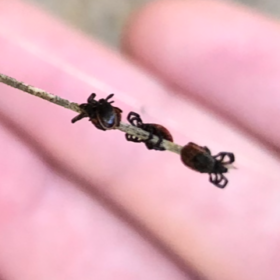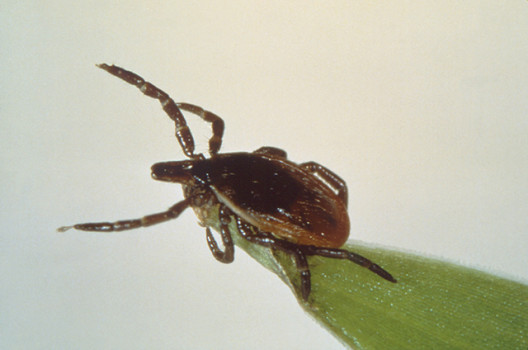If your trail is overgrown and thick with tall grasses (and most are thanks to a very wet Spring this year) … then you need to be aware of TICK HITCHHIKERS…



Unlike their highway counterpart these tick free riders don’t ask, they just grab on as you, your pet (or your horse) pass by. They perch quietly on the grasses and weeds that line your trail or backyard patiently waiting for their next unsuspecting host (and likely meal).
All too easily, you end up taking home a few uninvited guests and if not careful about checking and removing these pests when you return home, you could also end up inviting possible infection into your home.
Ticks carry Lyme disease and many other related infections that can cause debilitating and lasting symptoms. Tick incidence is on the rise almost everywhere, in part due to climate change and wetter, milder winters. If you enjoy the outdoors, you need to be aware of these itinerant nuisances and you need to take precautions to stay safe…
Here’s what you need to know…
- Ticks do not fly, nor do they “jump” but they do perch on the underbrush with little “arms” extended ready to grab on to a warm body passing by – human or animal (known as “questing“).
- Ticks mostly inhabit wooded and grassy areas where wildlife are present – trails, parks, even your backyard. Keeping trails and the perimeter of your property carefully trimmed will help minimize everyday encounters.
- Ticks prefer warm, moist habitats to dry and will seek out the same on their animal and human hosts, migrating to less visible parts of the body (groins, armpits, belly buttons). Covering up when heading outside minimizes your exposure but you still need to do a thorough head-to-toe tick check every time you have been in a potential tick habitat.
- Ticks can remain attached for 72 hours or more but will typically detach after feeding on their host. The host is unlikely to feel the bite because of a anesthetizing substance in the tick saliva.
- In most cases, the tick must be attached for 36 or more hours for the bacterium to be transmitted to the host. However, most humans are infected by bites from immature ticks smaller than a poppy seed that are difficult to spot.
- Tick bites often but do NOT always present a bullseye skin rash. See here for more information on common symptoms and rashes.
- Ticks may be unknowingly brought into the home on clothing, a pet, or even a backpack and can later travel to a human host long after memory of the potential tick encounter has faded. Among the most at-risk groups are families with free-roaming indoor-outdoor pets.
- Thorough bathing in warm to hot water will help release a tick that has attached to the skin. Otherwise ticks can be carefully removed with tweezers or a tick-removal tool. Read here for more information about how to do a proper tick-check.
Stay safe, be smart!
An ounce of prevention is better than years of treatment or infection!!
